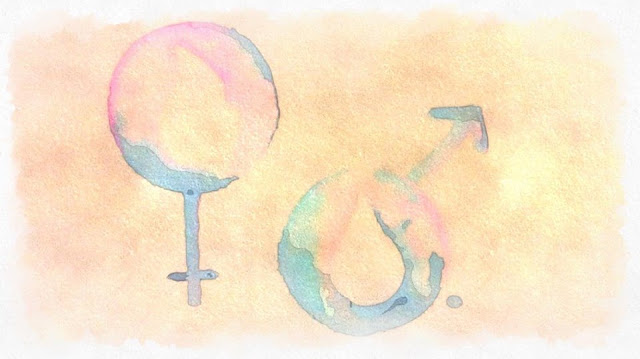Role of Gender in Water and Development
 |
| My watercolour painting. |
 |
| WPS, 2012 |
As the world bank states in their working paper 'The Rising Tide A New Look at Water and Gender', "Water can be thought of as an asset, a service, and a space" - (Das, 2017).
Water is many things and holds different values, these are economic, social, political, cultural and spiritual. Socio-economic systems and cultural customs mean that water becomes a platform for which culturally ingrained gender relations are practiced. This highlights gendered inequalities.
Water is many things and holds different values, these are economic, social, political, cultural and spiritual. Socio-economic systems and cultural customs mean that water becomes a platform for which culturally ingrained gender relations are practiced. This highlights gendered inequalities.
The Economic Value of Water:
Non-Economic:
On the non economic value of water, which is just as, if not more important, is how underlying behaviour patterns and social/cultural norms are played out in the paradigm of water because hierarchies, taboos and rituals all affect women and men in different ways and to different extremes. The relationship can often play out in ways that you do not expect, for example, in the Global South, girls are taught to swim less but yet more die of drowning. Women and girls relate to water differently from men and boys, while "norms and practices related to water often exacerbate ingrained gender and other hierarchies" (Das, 2017). Water collection for example is seen as a mainly female task (see my next post for expansion on this). The power relations that play out in water and sanitation can negatively affect girls, for example, constraining girls time meaning that many girls miss school everyday or sanitation issues like a lack of toilet facilities. When there is a lack of adequate and safe toilet facilities, especially in schools, girls on their periods are affected more severely and completely differently to boys. Taboos and embarrassment around menstruation, are exacerbated when there then is a lack of sanitary facilities and cause many girls stay at home during their periods. Up to 1 in 10 girls across sub-Saharan Africa are estimated to miss school during their period (Higgins, 2017). These are just a couple of examples of how water reinforces and reflects gender inequality.The relationship between water and gender is salient to broader progress on gender equality. Therefore, it is important to normalize conversations from the female viewpoint from the global south if we are ever to combat equity issues an understand the true impact of topics that are, for various reasons, generally shied away from, like sanitation related practicalities like menstrual hygiene management and reproductive health and sexual assault during water collection or long walks to the toilet. These very real issues are shrouded with taboos, secrecy and imposed beliefs; water has a huge part to play within these and how this impedes on women's lives. These are issues I will discuss further in my next few posts.



Hi! Thank you for this post which is very comprehensive of the gender-related problems. It is very clearly outlined and makes one want to read further! I think that too often, only the non-economic aspects of gender inequities are taken into account, but you're absolutely right to highlight the economic ones! I look forward to reading your next posts on who gender intersects with issues related to water access!
ReplyDeleteSarah Champagne
Hi, thank you for your comment! Yes I wanted to provide an overarching view highlighting issues of inequality in regards to water and development so definitely thought it was important to include both the economic and non economic aspects as all to often one or the other is focused upon.
Delete